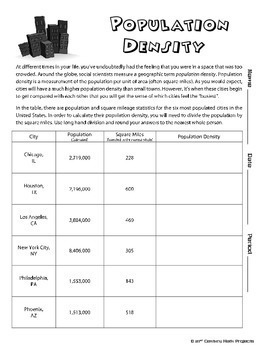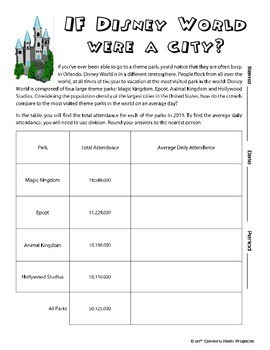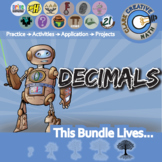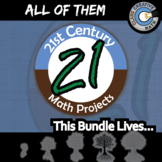Disney Population -- Decimals & Population Density - 21st Century Math Project
- Zip
- Google Apps™

What educators are saying
Also included in
- 12 of my best projects/units all in an organized money saving bundle! These engaging, student/teacher approved math projects that provide rigor, relevance, and cross-curricular content altogether. I have each of these projects advertised separately these projects are $65, so this is over 30% off!.Price $45.00Original Price $70.00Save $25.00
- This is a selection of my Decimals resources all in a money saving Essential Bundle! You save significant money and time versus purchasing these separately!Essential Bundles are designed to give you everything you need to rock your unit. Warmups, Notes, Activities, Games, Exit Tickets, and Tests. YoPrice $35.00Original Price $116.50Save $81.50
- The project is the core of what I have built my classroom around. Scaffolding learners to real world projects. This bundle includes the 105+ math projects I have written. This is over 2,700 pages of content.21st Century Math Projects each scaffold through an authentic context and math skill buildingPrice $395.00Original Price $564.00Save $169.00
Description
If you’ve ever been able to go to a theme park, you’d notice that they are often busy. In Orlando, Disney World is in a different stratosphere. Considering the population density of the largest cities in the United States, how do the crowds compare to the most visited theme parks in the world on an average day?
In this 21st Century Math Project, you will be given a mapping to the Content Standards, an outline for how to implement the project, 3 different assignments for students to use, and an answer key. ***THIS PRODUCT HAS BEEN UPDATED WITH A GOOGLE SLIDES INTERACTIVE VERSION INCLUDED. REDOWNLOAD IF YOU HAVE IT ALREADY***
Download the preview to see pretty much everything!
-- In “Population Density", students will compare the 6 cities in the US that have the highest populations and calculate their population densities.
-- In “If Disney World were a City”, students will they will calculate the population density of the Disney Parks given average attendance and square miles.
-- In “My Disney Vacation”, students will build on the skills from the first two assignments and analyze the month by month attendance at each of the parks. Students will use this data to determine when they want to take their trip to Disney World. Data for four parks are given so there could be 4 different groups, 4 different stations or partners could work through all four together. Differentiate as desired.
You may be interested in the following discounted bundles. SAVE $$$!
•21st Century Math Projects -- All the Projects
For more tips, tricks and ideas check out the Clark Creative Education Blog
And join our community where I post ideas, anecdotes, elaborations & every once in a while I pass out TPT gift cards! And jokes! I do jokes too!








